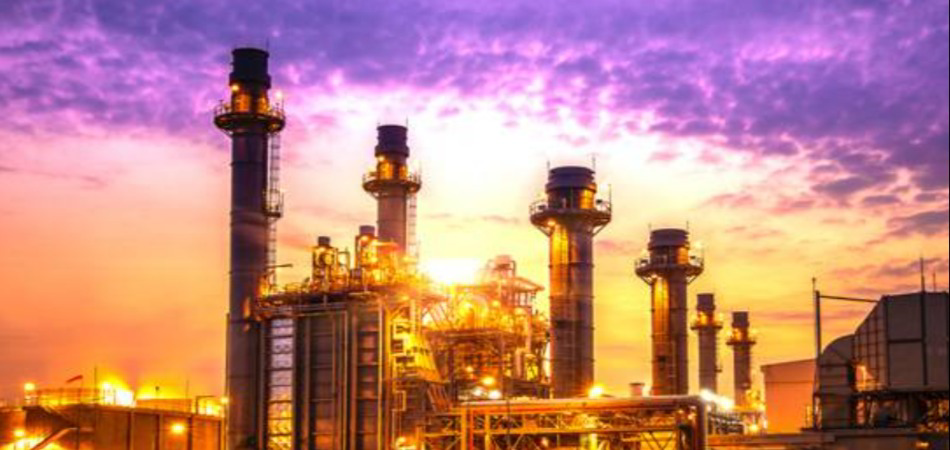LSM stages growth of 10.4% against 4.24%: PES

MG News | June 09, 2022 at 10:38 PM GMT+05:00
Jun 09, 2022: During July-March FY2022, Large Scale Manufacturing (LSM) staged the growth of 10.4 percent against 4.24 percent growth in the corresponding period last year, said a Pakistan Economic Survey (PES) issued here.
According to the PES, production of 11 items under the Oil Companies Advisory Committee increased by 2.0 percent, 36 items under the Ministry of Industries and Production surged by 10.3 percent, while 76 items reported by the Provincial Bureaus of Statistics increased by 12.1 percent.
The expansion of LSM is also appeared to be broad based, with 17 out of 22 sectors of LSM witnessed a positive growth, Survey said.
Furniture, Wood Products, Automobile, Footballs, Tobacco, Iron & Steel Products, Machinery and Equipment, and Chemical Products remained the top performing sectors of LSM.
Since September 2020, the LSM has rebounded after months of a downturn. On year-onyear (Y-o-Y) basis, LSM grew by 26.6 percent in March FY2022 against 22.5 percent growth in the same month last year. Initially the pace was slow till December 2021, but rebounded from January 2022 onwards. While, Month-on-Month (M-o-M) basis, growth of LSM marked the growth of 8.2 percent in March 2022 as compared to 3.7 percent in February 2022, Survey said.
Textile sector weight has been reduced from 20.9 to 18.16 in QIM 2015-16 but still the highest among all sectors of LSM, survey said.
The sector grew by 3.2 percent during July-March FY2022 as compared to 8.0 percent in the same period last year. Major growth originated from woolen segment production with highest surge of 38.9 percent in blankets, 27.9 percent growth in woolen & carpet yarn, and 19.1 percent in woolen & worsted cloth.
Production of yarn and cloth showed marginal growth of 0.7 and 0.3 percent, respectively. Congruent production units, invariant capacity and elevated cotton prices owing to demand and supply gap disruptions have moderated the growth momentum of the cotton sector.
Wearing apparel has been separated from textile sector with 6.08 weight in QIM showing the growth of 34 percent against the contraction of 35.6 percent.
The sector has gained traction local as well as in international market as garments production grew at 34.0 percent during the period. The export of garments also escalated with 33.9 percent growth in terms of quantity during July-March FY2022.
Food group having second highest weight of 10.69 in QIM witnessed the growth of 11.7 percent during the period under review against 27.1 percent same period last year. Sugar, bakery and chocolate & sugar confectionary, tea blended, and starch came up with significant growth of 38.1, 11.9 and 10.6 percent respectively. Historic bumper crop of sugar cane and better international prices pushed up the production level of sugar in Pakistan.
Production of cooking oil increased by 10.8 percent, while vegetable ghee down by 2.5 percent. Surging prices of palm oil and soyabean in international market accompanied with the depreciating Pakistani currency against the dollar were the major factors responsible for lower level of production.
Coke and Petroleum products marginally grew by 2.0 percent in July-March FY2022 against 12.3 percent same period last year. High global energy prices depressed the overall growth momentum.
However, pickup in economic activities especially automobile and resultant increase in transportation activities and oil sales (which showed an increase of 14.9 percent during July-March FY2022 and clocked at 16.3 million tonnes) partially offset the impact of high fuel prices.
Besides, production of jute batching oil, jet fuel oil, kerosene oil, diesel and Solvant Naptha remained encouraging as demand spurred from transportation. Automobile sector marked a vigorous growth of 54.1 percent during July-March FY2022 against 21.6 percent growth last year.
New Auto Policy, to promote new technologies including Electric Vehicles (EVs) and Hybrid, and accommodative monetary policy to promote auto financing paved the way to grew automobiles production.
Besides, tax incentives to promote locally manufactured cars also pent-up the demand as well as the production of the given sector such as locally manufactured hybrid sales tax reduced from 12.5 percent to 8 percent and FED reduced by 2.5 percent upto 1300cc for locally manufactured cars.
Moreover, during July-March FY2022 car production and sale increased by 56.7 and 53.8 percent, respectively. Trucks & Buses production and sale increased by 66.0 and 54.0 percent and tractor production and sale increased by 13.5 and 12.1 percent, respectively.
Iron and Steel production jumped by 16.5 percent during the period under review against the contraction of 8.6 percent in the same period last year. Billets/Ingots, mainly used in construction industry, grew by 32.8 and H/C.R.Sheets/Strips/Coils/plates increased by 7.9 percent.
Both reflect the growth momentum in automobile and construction-allied sectors. Non-metallic Mineral Products inched up 1.1 percent as compared to 18.5 percent increase last year.
Chemicals is subdivided into two components i.e., chemical products and fertilizers with the total weight of 6.48 in QIM. The chemical products showed the growth of 15.2 percent against 14.5 percent same period last year. Sulphuric acid, hydrochloric acid, soda ash, and toilet soaps remained the major contributors to overall growth of chemicals. On the other hand, Fertilizers production showed a meager growth of 3.3 percent as compared to 5.9 percent growth during last year. Pharmaceuticals growth witnessed a dip of 0.4 percent during July-March FY2022, against the growth 10.5 percent last year, triggered by hefty decline observed in capsules, injections, tablets and galenicals.
Electrical equipment declined by 1.1 percent against the hefty shrink of 17.1 percent. Paper and Board production increased by 8.5 percent during July-March FY2022 as compared to dip of 0.6 percent last year.
Rubber Products nosedived by 20.6 percent during July-March FY2022 as compared to 13.1 percent growth in the same period last year. Wood Products jumped by 157.5 percent as compared to contraction of 46.2 percent last year.
Production of Plywood remained the sole contributor to overall pick up in the output of wood. Furniture production drastically increased by 301.8 against 71.7 percent in the same period last year. Other manufacturing, particularly footballs production substantially increased by 37.8 percent as compared to 29.8 decline in the corresponding period last year.
The sector picked up the growth by pent-up demand in international market and marked a growth of 40.3 percent in exports.
APP
Related News
| Name | Price/Vol | %Chg/NChg |
|---|---|---|
| KSE100 | 135,939.87 307.74M |
-0.41% -562.67 |
| ALLSHR | 84,600.38 877.08M |
-0.56% -479.52 |
| KSE30 | 41,373.68 101.15M |
-0.43% -178.94 |
| KMI30 | 191,069.98 82.45M |
-1.17% -2260.79 |
| KMIALLSHR | 55,738.07 422.01M |
-1.03% -577.24 |
| BKTi | 38,489.75 45.79M |
-0.02% -8.33 |
| OGTi | 27,788.15 6.87M |
-1.24% -350.24 |
| Symbol | Bid/Ask | High/Low |
|---|
| Name | Last | High/Low | Chg/%Chg |
|---|---|---|---|
| BITCOIN FUTURES | 116,880.00 | 120,695.00 116,090.00 |
-3355.00 -2.79% |
| BRENT CRUDE | 68.79 | 69.41 68.60 |
-0.42 -0.61% |
| RICHARDS BAY COAL MONTHLY | 96.50 | 96.50 96.50 |
0.50 0.52% |
| ROTTERDAM COAL MONTHLY | 104.50 | 104.50 104.25 |
-2.05 -1.92% |
| USD RBD PALM OLEIN | 998.50 | 998.50 998.50 |
0.00 0.00% |
| CRUDE OIL - WTI | 66.65 | 67.13 66.22 |
-0.33 -0.49% |
| SUGAR #11 WORLD | 16.56 | 16.61 16.25 |
0.26 1.60% |
Chart of the Day
Latest News
Top 5 things to watch in this week
Pakistan Stock Movers
| Name | Last | Chg/%Chg |
|---|
| Name | Last | Chg/%Chg |
|---|



